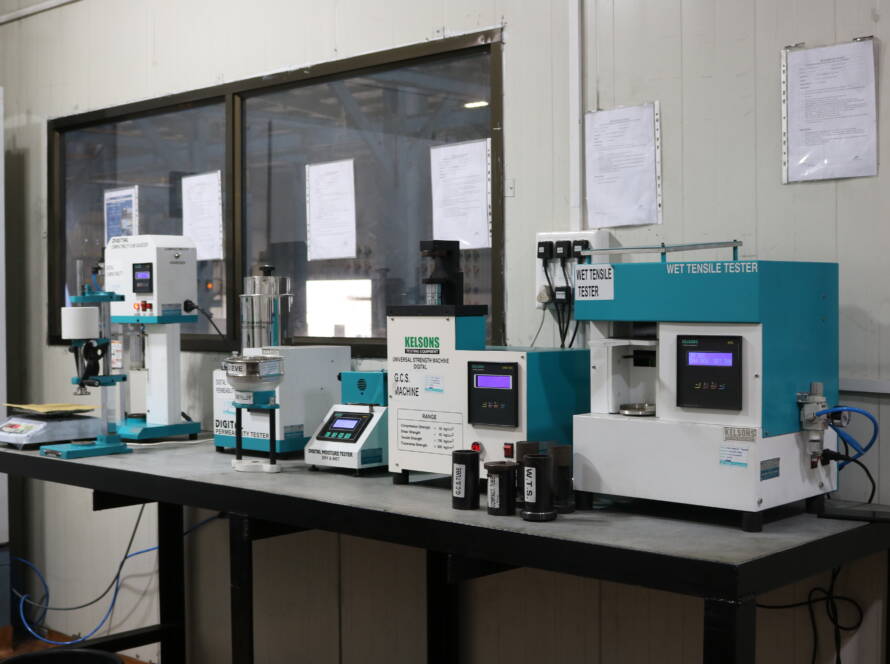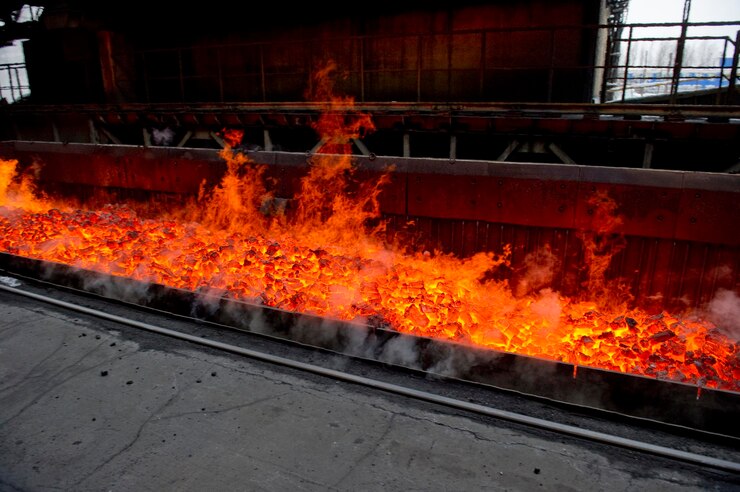Choosing the best casting method is essential for determining the end product’s functionality, quality, cost, and efficiency. Die casting and sand casting are two common processes of metal casting, and both processes have applications according to some specific requirements in an application.
In order to identify the most prominent differences between Die Casting vs Sand Casting. The manufacturers, decision-makers, and engineers should be capable of distinguishing between them since the goal is to achieve the maximum economic and technical state of the production.
Metals Used for Casting
The mould can be constructed of various materials based on the casting process employed. The metal solidifies inside the mould, and the cast item is forced out and otherwise manufactured if needed.
Finished precision die casted products
(Source: https://fractory.com/die-casting-explained/)
Although, in theory, the principles are the same, things are relatively different in practice: precision, surface finish, cost, and application. The difference between Die Casting vs Sand Casting is that the right one will be selected upon realising the pros and cons of each method altogether.
Pressurised Injection Moulds
In the die casting process, a molten metal is pressurised inside a hardened steel die or strong mould. The dies are made to exact sizes and used for the mass production of similar parts. The capability of the process to produce parts with precise surface finishes and tight tolerances makes die casting find widespread application in consumer products, aerospace, automotive, and electronic industries. The production rate using the technique is around 500 parts per hour on an average, which makes it industrially viable.
Pressurised Injection Moulds
(Source: https://www.sksdiecasting.com/die-casting/molds)
Its most frequent advantage is the ability of die casting to cast thin-walled and extremely precise parts without sacrificing structural integrity.
How is It Done?
During the sand casting, a part of the pattern is pressed into the sand as part of the sand casting process of making the cavity from which the shape must be taken. The liquid metal is afterwards cast into the cavity, allowed to cool and solidify, and the shattered-up sand mould is in the process of getting back the casting.
Compared to die casting, the sand mould will not be reusable, and a fresh mould will have to be prepared for every casting. Moreover, you can get die cast ratio models of 1/18 to 1/64 making it multipurpose for usage. This results in increased cycle times and overall decreased dimensional accuracy, but lower cost of tooling and material flexibility make sand casting the better option for most uses.
Massive Processing of Projects
Die casting is the process of choice for volume, high-part critical production, where economies of scale will return the initial investment. It is best suited to those applications where repeat dimensional accuracy is high, detail high and post-process low. This is the reason that CAGR for Die Casts are showing an impressive, 6.24% growth.
A higher rate of manufacture, with minimal material loss potential, is a further benefit which is found to be ideal for those sectors where high efficiency and consistency are required. In comparison to sand casting, it has unparalleled versatility and first-cost benefits. It is, therefore, the first choice for products too big, too heavy, or too complicated to die cast.
It also can work with ferrous metals, thus being of greater utility for most engineering and structural uses. While slower and coarser than die casting, its versatility is needed wherever finish and versatility are less important than selection and material customisation. One must also consider the environmental aspect when comparing sand casting and die casting.
Energy Consumption Factors
Where die casting is involved, a tremendous amount of energy has to be used in terms of applying high-pressure systems and heating non-ferrous materials. Permanent steel dies consume a lot of resources in the process of manufacture as well. Sand casting is cleaner in some settings, but especially where reusable or natural material sands are involved. The problem, however, is that the mould has to be recreated following each casting, and that contributes to material usage over the long term. Technologically and in terms of workforce, die casting is more complex, especially as far as die designing and preparing the machine are concerned.
High-Class Finishes As A Result Of Advanced Machinery Application
The machinery used is of high class and requires technologically qualified personnel to operate at their maximum level. Sand casting, with more manness and artistry going into all but perhaps exceptional instances, can be done with less sophisticated apparatus and fewer technical requirements.
Comparing finished and unfinished Die casts
(Source: https://moldiecasting.com/blog/die-casting-surface-finish/)
Both processes are good and bad in their way, and part design, material properties, production level, cost, and shipping schedule will decide the better one to use. Those manufacturers who know the difference can use the correct process to produce their goods economically and efficiently as they would prefer.
Conclusion
Lastly, with the basic difference between Die Casting vs Sand Casting, manufacturers can make an informed decision according to the requirements of their projects.
Die casting is perfectly suitable for mass, high-accuracy, large-sized pieces with a smooth surface and tight tolerance. Sand casting is, however, inexpensive and adaptable to cast unusual or large pieces of metal.
Depending on the project requirement, companies’ production processes can be optimised, and the products can be delivered effectively based on performance, cost, and time requirements.
FAQs
1. What is the main difference between die casting and sand casting?
The key difference lies in the mold type. Die casting uses permanent metal molds under high pressure, while sand casting uses disposable sand molds. Die casting produces smoother, more precise parts, whereas sand casting is more flexible and cost-effective for larger or complex components.
2. Which process gives better surface finish — die casting or sand casting?
Die casting provides a superior surface finish and tight dimensional accuracy due to the use of hardened steel molds and controlled pressure. Sand casting generally results in a rougher surface that may need additional machining or finishing.
3. Which metals are commonly used in die casting and sand casting?
Die casting typically uses non-ferrous metals such as aluminum, zinc, and magnesium. Sand casting can handle both ferrous and non-ferrous metals, including iron, steel, bronze, and aluminum.
4. Which casting method is more cost-effective?
For low-volume or large-size parts, sand casting is more economical because of its low tooling cost. Die casting, however, becomes more cost-effective for high-volume production where the cost of dies can be spread across many units.
5. Which process is better for high-precision components?
Die casting is ideal for producing high-precision parts with smooth surfaces and tight tolerances, making it suitable for automotive, aerospace, and electronic applications.
6. How does energy consumption differ between die casting and sand casting?
Die casting consumes more energy because it requires high-pressure systems and molten metal injection into steel molds. Sand casting, although slower, generally uses less energy but requires a new sand mold for each casting.
7. Which process is more suitable for large components?
Sand casting is better suited for large, heavy, or complex parts since it allows more design flexibility and can handle larger volumes of molten metal than die casting.
8. Can the sand used in sand casting be reused?
Yes, in most cases, sand can be reclaimed and reused after cleaning and conditioning, which makes the process more sustainable and cost-efficient over time.


